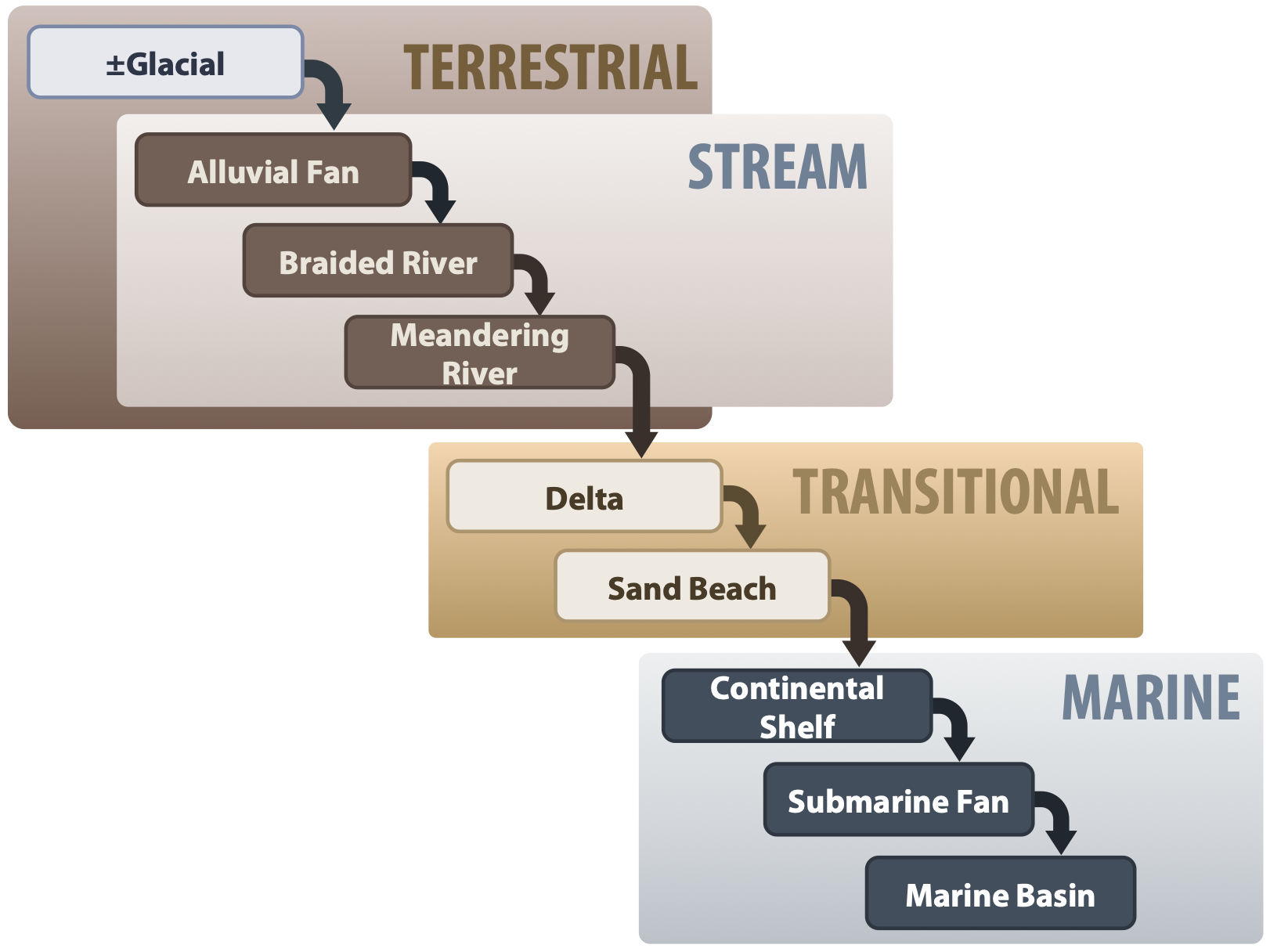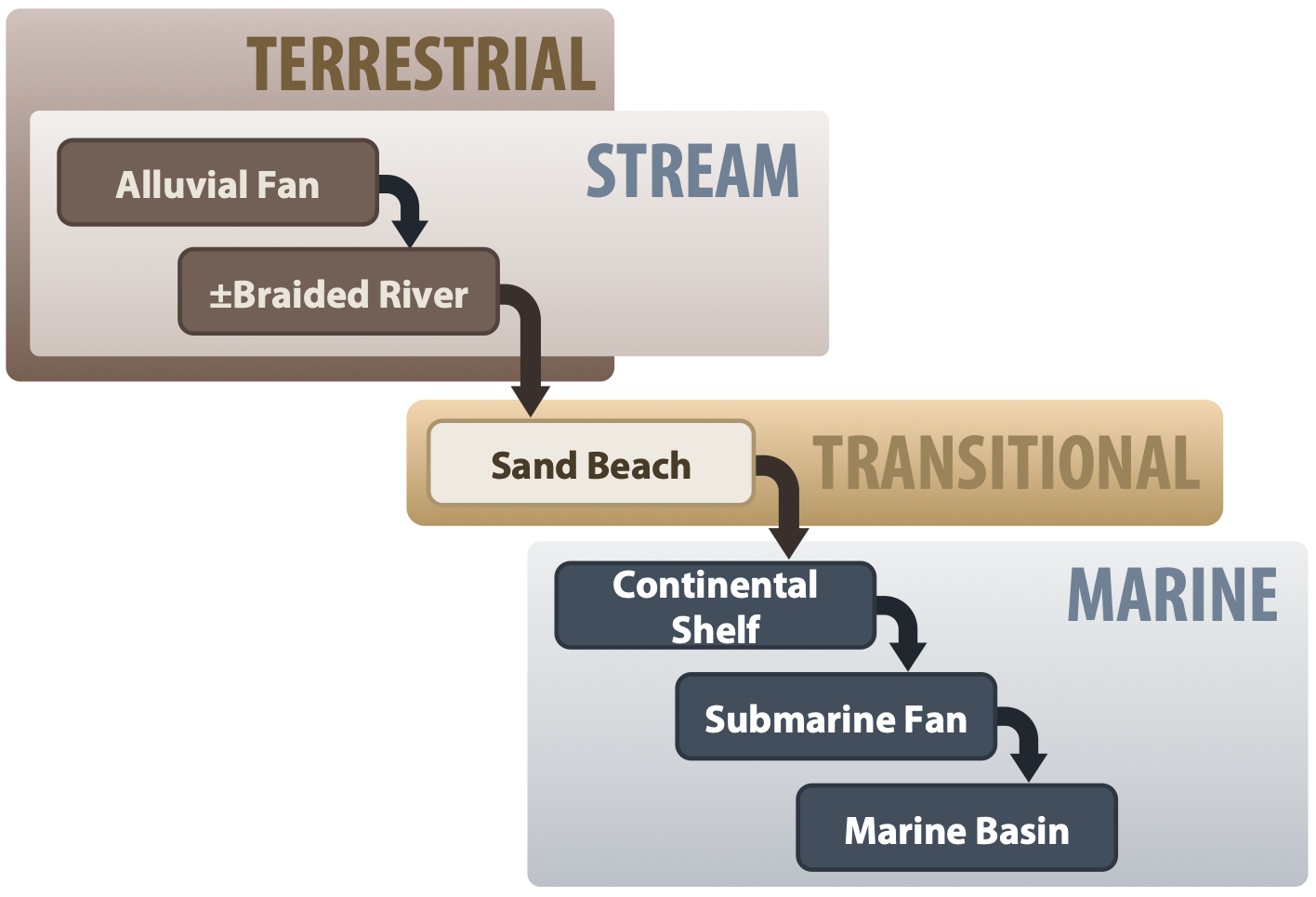Sedimentary Transport Systems
Generally, sediment is moving from the highest points in the terrestrial highlands to the deepest ocean. Terrestrial highlands form the sourceland, which is the initial source of sediment in areas of igneous, metamorphic or preexisting sedimentary rocks which are physically weathering to clasts, or chemically weathering to dissolved ions. Clasts are then transported to a depositional environment by wind, water or ice; dissolved ions are transported in water.
The transport of sediment from sourcelands at higher elevations to the ocean occurs in a predictable way. Sediment is gradually moved through a series of different depositional environments between the sourceland and the ocean. A typical long system of sediment transport would include the following environments (Figure 2.5):

Alternatively, if the sourceland is close to shore the sequence may be a short system. Debris flows may build out directly into a lake or ocean resulting in a wave-sorted, gravel beach and a submarine fan (Figure 2.6).

Sediment Maturity
This is a qualitative assessment using the terms immature or mature that describes how sediment has changed since it was first weathered, and often reflects the overall transport system. This is partially assessed based on the characteristic of the grains of the sediment (size, sorting, rounding), and partially based on the mineralogy.
Grain Size
The grains in a sand may represent a source rock that has mechanically weathered quickly to sand-sized grains, been moved only a short distance from this source rock, and little rounding has occurred. This would be termed an “immature” sandstone. Conversely, the grains may represent sand-sized particles that were weathered out from a previous sandstone as the source rock, and after that been transported a great distance. This latter sand has grains that have experienced much more physical and chemical weathering, though they may be the same size as the grains in the first example. This would be termed a “mature” sandstone.
Mineralogy
Mineral content is the second component of maturity. It helps to determine relative transport time/distance. As a generalization, the rate of chemical weathering of minerals decreases with decreasing temperature of formation. Minerals formed in high-temperature igneous magmas (e.g., basaltic magmas which erupt at ~1000-1200 ºC) are rarer in sedimentary rocks as they chemically weather quickly. (You may recognize this as the reverse of Bowen’s Reaction series, which describes which minerals form first in a cooling igneous magma.)
Many silicate minerals (e.g. feldspars found in granites formed at ~700-900 ºC) break down to form clay minerals during weathering. A high proportion of feldspars may therefore indicate the sand was derived from a nearby source of feldspars, such as a granite.
Quartz is very chemically stable at Earth’s surface temperatures, and is also a hard mineral resistant to physical weathering. For this course you should remember that if a rock is mainly composed of quartz then the other minerals have likely been physically destroyed or chemically removed during a prolonged transportation history.
Silts and clays contain particles that are too small to easily describe with the eye, and hence maturity cannot be assessed.
Carbonates are chemical or biochemical sediments meaning they are formed close to where they are eventually deposited. They are not assessed for maturity in the same way as clastic sediments.
